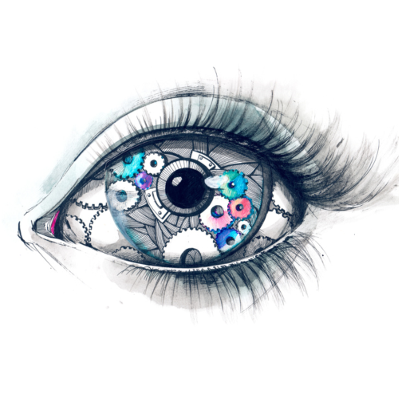JoomConnect Blog
A Picture is Worth 1000 Words, Really.
Again and again you hear about the importance of content- custom content, relevant content, content in general, but what you aren’t hearing is that you need visual content. You do need visual content. Want to know why?
Visual content is more successful than any other form of communication. No matter how much content you have it doesn’t matter if your message isn’t getting through to your audience. You might wonder then, “How might I get my message to my audience if not with words?.” Photos, images, graphics, and well, visuals of any kind are the driving force to get your message to resonate with your viewers or audience.
90% information actually transmitted to the brain is visual. 90 percent. This means that the other 4 senses - touch, hearing, smell, and taste have to fight over that last 10 percent. You might be thinking “Well ok, people are reading my text- that is visual.” And while we’d like to agree - unfortunately it isn’t the case. Text is not in an easily digestible format, and for people to remember and learn from what they’re reading it may take several times of reading the same text over and over again until they understand what they’ve just read.
Visuals are designed with our bodies in mind:
- Of all of the sensory receptors in your body - 70% are in your eyes.
- 50% of your brain is active in visual processing
- 40% of people respond better to visuals than other materials
- 93% of all communication is nonverbal

"It’s proven, visuals are necessary to make your message stick. What does this mean for your marketing? Include relevant visuals whenever possible! Although social media may be of a focus for visual content - relevant visuals should be included whenever possible because they are the driving force in getting your message through to your desired audience.

"Now this doesn’t mean to swear off typographic content entirely, but to complement it with relevant visuals instead. A visual and text should complement one another, and together send the message to the viewer. There is quite the variety of visuals that can be used in a variety of mediums including: photography, video, screenshots, infographics, comics, memes, graphs, charts, and more. Of course, each visual has its own appropriate place and use.
You’ll want to be mindful of your visual use. Don’t add in a random image just to have an image. The image should help the viewer to understand your message. Random images will distract the viewer rather than point them in right direction. You should also be weary of the size and quality of the images you are using. Something too pixilated will reflect poor quality from your business - and an image too large or small shows poor attention to detail. If you struggle finding the balance then consult a designer or a marketing professional. Also try to avoid the use of overused stock photos. You want to be unique and stand out amongst your competition not just be “another fish in the sea” so to speak.
Along with including visuals in the content you post - pay close attention to your biggest and one of your most important marketing tools, your website. You should pay close attention to the design of your website.
46.1% of people say a website's design is the number one criterion for discerning the credibility of the company.
Because your website should be used as the hub of all of your marketing initiatives, and you should be constantly directing traffic to your website, you’ll want to be sure that the design of your website is sending the right message. This doesn’t mean that any message is “right” or “wrong”, just that the message you send with the design of your website should align with your marketing strategy as a whole. Everything should come together as one complete composition. If you aren’t exactly sure what things to look for when it comes to “good” vs “not-so-good” design consider the following:
- Purpose: A website design that has or displays purpose will cater to the needs of your users. Whether your visitors intend to use your website for educational purposes or transactional purposes make it easy for them to get there. Provide a website design that allows them to easily get to where they want to go. (Calls-to-action are a great tool for helping users navigate through your site!).
- Colors: Each color evokes a number of different emotions. When choosing the colors for your web design ensure that they not only align with the rest of your branding to keep it consistent, also pick colors that reflect your desired brand image. The image below is an excellent guide for choosing a color scheme.

- Layout: Whether your layout be an “F” layout, or grid based, or whatever else you choose just be sure that it is organized. This relates back to your visitors being able to easily navigate your page, but an organized layout also reflects professionalism. Random and scattered items on a website give off a “poor quality” and “messy” impression, which are qualities that you don’t want paired with your business.
- Imagery: Finding the time to get quality photos that demonstrate each of your messages is extremely difficult. Thank goodness for stock photos! Although sometimes stock photos can get a bad rap, they aren’t all that bad! In fact, they are pretty great. Keep in mind a few things when choosing stock photos - be it for your website or any other marketing materials:
- Use images that compliment your content.
- Modify the image to make it work for your intended purpose.
Keep in mind that these tips apply to all of your marketing materials, not just your website! Your website is, however, a GREAT starting point. Do you have questions about your use of visuals in your marketing efforts? Reach out to us! We are here to answer any and all of your marketing questions. Did this article help improve your marketing efforts? Lets us know in the comments!



